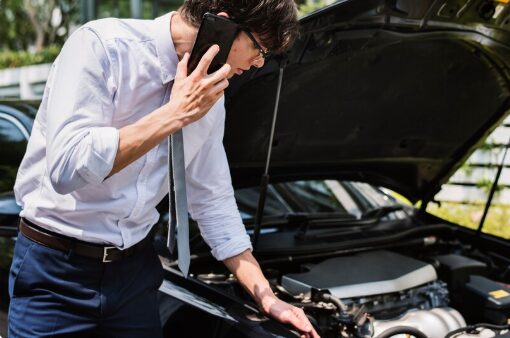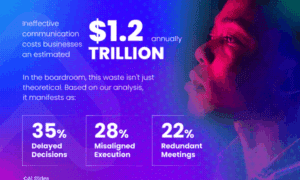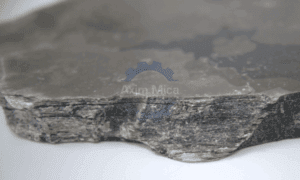When people hear the term “wrecked car,” they often think of something worthless — a pile of twisted metal that belongs in a junkyard. But that assumption couldn’t be further from the truth. In the world of auto salvage, a wrecked car can still hold significant value, depending on the type and extent of damage, the model, and how the vehicle will be used.
Whether it’s a total loss from an insurance standpoint or just a vehicle with some cosmetic damage, wrecked cars are being bought and sold every day by mechanics, rebuilders, car enthusiasts, and resellers. So, what exactly makes a wrecked car valuable, and how do you evaluate whether one is worth buying? This guide breaks down the factors that determine the value of a wrecked car and what you need to know before purchasing one.
What Is a Wrecked Car?
A wrecked car is typically a vehicle that has sustained damage from a collision, rollover, or other impact. The damage may be:
- Cosmetic (dents, scratches, cracked bumpers)
- Mechanical (engine, transmission, suspension failure)
- Structural (frame misalignment, bent chassis)
- Safety-related (airbag deployment, broken seat belts)
In many cases, the vehicle has been declared a total loss by an insurance company, meaning the repair cost exceeds the car’s market value. However, this doesn’t always mean the vehicle is beyond repair or has no use. In fact, many wrecked cars are still drivable, repairable, or useful for parts.
The Value in Wrecked Cars: A Closer Look
So, what makes a wrecked vehicle worth something? There are a few key elements that give these damaged cars ongoing value.
1. Reusable Parts
Even if the vehicle isn’t drivable, many of its components may still be in excellent condition. Parts like:
- Engines
- Transmissions
- Doors and fenders
- Seats and dashboards
- Headlights and taillights
- Rims and tires
can often be removed and resold individually. In fact, the value of these parts, when sold separately, can sometimes exceed what the whole car would bring on the used market.
2. Repair Potential
Not all wrecks are equal. Some cars are declared total losses due to minor cosmetic damage or high labor costs — especially if the vehicle is newer or more expensive. For buyers with repair skills or access to affordable labor, fixing a wrecked car can be cost-effective and profitable.
A vehicle that has:
- Minimal frame damage
- Cosmetic body panel dents
- Easily sourced replacement parts
- No engine or transmission issues
can often be repaired and returned to the road for less than the cost of buying a clean-title equivalent.
3. High-Value Models
Luxury, rare, and high-performance vehicles hold value even when damaged. A wrecked BMW, Tesla, or Corvette might still fetch a good price because of the demand for their parts or the potential to rebuild.
Enthusiasts, collectors, and specialty rebuilders are often willing to pay a premium for salvage versions of these cars, knowing the resale or part-out potential remains high.
4. Title Status and Documentation
A wrecked car with a clean title is often more valuable than one with a salvage or branded title. Even if the damage is extensive, the fact that the vehicle has not been labeled as salvage can make registration and resale easier, increasing its appeal to buyers.
Likewise, vehicles with full documentation — including service records, accident reports, and repair invoices — are easier to evaluate and more trustworthy to potential buyers.
5. Demand for Specific Makes and Models
Some vehicles retain value better than others, regardless of condition. Trucks, SUVs, and popular sedans are always in demand. If the wrecked car you’re looking at is a high-demand model, it’s likely worth more to buyers and parts dealers alike.
Who Buys Wrecked Cars?
You might be surprised to learn just how many different types of buyers actively seek out wrecked vehicles. Here’s a breakdown:
Mechanics and Body Shops
These professionals buy wrecked cars to repair and sell, or to use as parts donors for customer vehicles. They have the tools and know-how to make repairs at a lower cost, giving them a competitive edge in the market.
Car Flippers
These buyers specialize in finding undervalued vehicles, repairing them, and reselling for a profit. Wrecked cars offer huge margins when handled properly.
DIY Enthusiasts
People with a passion for cars — and some mechanical knowledge — enjoy the challenge of bringing a wrecked car back to life. It’s a chance to save money and learn valuable skills.
Parts Dealers
Businesses that focus on reselling used auto parts often purchase wrecked cars for their inventory. Once the valuable components are removed, the remaining shell is usually sold for scrap.
Exporters
Some wrecked vehicles are shipped overseas, where repair and registration rules differ. In many cases, international buyers can repair these cars more affordably and legally drive them in their home countries.
How to Evaluate a Wrecked Car’s Value
Before buying a wrecked car, it’s crucial to assess its potential value carefully. Here are the steps to take:
1. Review the Damage Report
Most salvage auctions or listings will include a condition report or damage assessment. Review this carefully to understand which parts are affected and how severe the damage is.
2. Look at the Photos
Photos tell a big part of the story. Look for:
- Airbag deployment
- Crumple zone damage
- Frame bends or twists
- Uneven panel gaps
- Damage to suspension or wheels
Use the photos to estimate what’s repairable and what will need to be replaced.
3. Run the VIN
A vehicle history report based on the VIN will show you:
- Past accidents
- Service history
- Title status
- Odometer readings
This helps you determine if the car has a clean history aside from the current damage.
4. Estimate Repair Costs
Factor in:
- Parts
- Labor (if you’re not doing the work yourself)
- Inspection and registration fees
- Transportation to your location
Compare the total cost with the post-repair market value to decide if the car is worth buying.
5. Consider Your Exit Strategy
Are you planning to drive the car long-term, sell it after repairs, or strip it for parts? Knowing your plan helps you determine whether the vehicle is a good fit.
Common Mistakes to Avoid
Buying a wrecked car comes with risks. Here are some common pitfalls and how to avoid them:
- Underestimating repair costs — Always leave room in your budget for unexpected issues
- Overpaying based on emotion — Don’t get attached during bidding
- Skipping inspections — If possible, have a mechanic evaluate the car
- Ignoring title complications — Some states have strict rules for registering salvage vehicles
- Buying beyond your skill level — Be honest about what repairs you can realistically handle
Final Thoughts
Wrecked cars may be damaged, but they’re far from worthless. In fact, many of them represent untapped value — whether as repairable vehicles, parts donors, or flipping opportunities. The key to success in this space is knowledge: knowing how to evaluate a car, what to repair, and when to walk away.
If you’re mechanically inclined or working with someone who is, buying a wrecked car can be a smart move. Even for first-time buyers, taking a cautious, research-driven approach can help you land a solid vehicle for much less than retail price.
Next time you see a car listed as “wrecked,” don’t write it off. With the right mindset and preparation, that damaged vehicle might just become your next great find.



































